As in many other parts of the World, most traditional Japanese festivals and contemporary holidays have deep roots in ancient folklore and religion. What is of particular interest to me is how Japanese traditional cuisine, washoku, seems to be linked to the Japanese celebrations in a way that most Western cuisines do not – although of course, there are some exceptions, like the Thanksgiving turkey and some New Year foods in places like Italy.
The topic of the linkages between food and folklore/religion is indeed very complex, so the one below is just an overview of some of the main Japanese public holidays and celebrations, with references to the foods typically eaten during those occasions.
Shōgatsu 正月- the New Year’s day
Usually mentioned by adding the Japanese honorific prefix “o” to the word, making it Oshōgatsu お正月.
This is one of the most important Japanese festivals and a public holiday too. Since Japan’s adoption of the Gregorian Calendar in 1873, it falls on the first of January. Before, the Japanese New Year would fall in the period going from the end of January to well into February, following the lunar calendar.
The New Year would also be the occasion to pray to Toshigami-sama 年神様, the god of the New Year. A major deity in the agrarian society, he was considered the protector of the five grains – a general term of Chinese origin used to describe all staple crops.
Oshōgatsu is characterized by the eating of Osechi ryōri お節料理, a colorful cuisine consisting of foods considered to be auspicious. The reason for why foods such as kelp, fish roe, and others are regarded as bringers of good luck is an interesting and long topic in itself. To broadly summarize, the reasons are due to propitious wordplays on the food’s names or to characteristics of the foods themselves: for example, fish roe, which contains many eggs, is eaten to wish for a long descendancy.
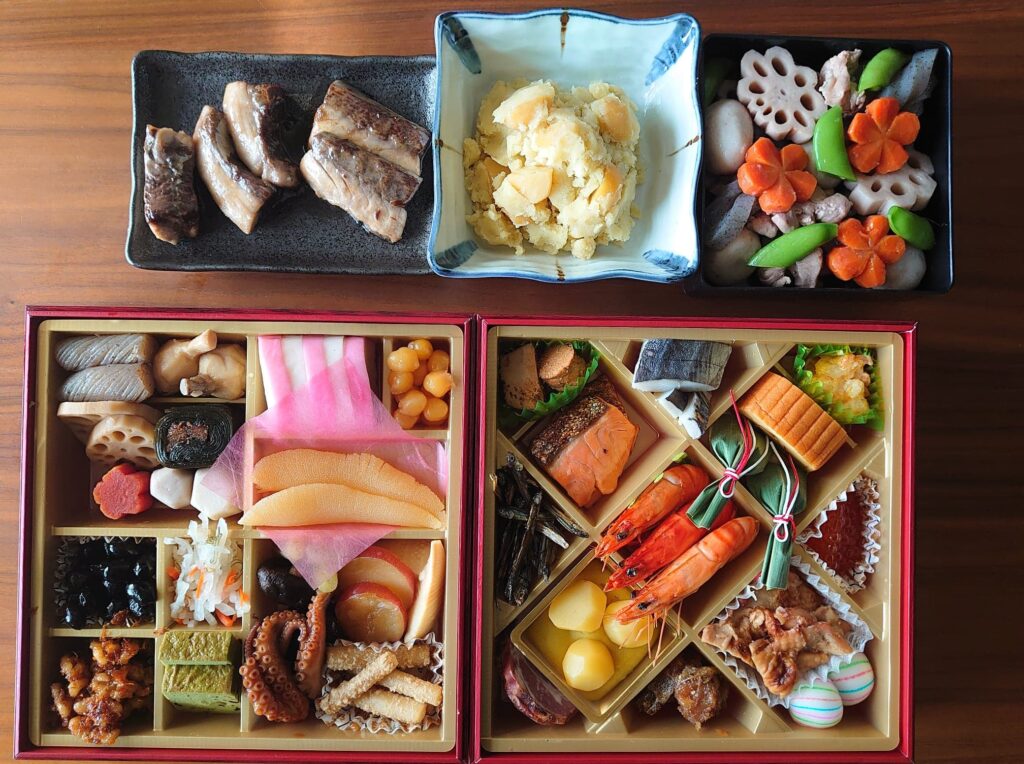
Kagami-biraki 鏡開き- the “Mirror–Opening”
On New Year’s day, a mochi rice cake 餅 composed of two layers is offered to Toshigami-sama. During the following kagami-biraki celebration, which falls on January 11th, the cake is broken open with a wooden mallet, and the pieces used as ingredients to the oshiruko お汁粉 and ozōni お雑煮 , soups typical of the New Year celebrations.
Setsubun 節分 – the “Separation of the Seasons”
Strictly speaking, since Japan has four distinct seasons, this occurrence repeats itself four times during the Year.
In fact, setsubun refers to the day before the start of each new season; however, in contemporary Japan, only the “spring setsubun” is observed, and is a public holiday falling on February 3rd.
The reason why currently only the “spring setsubun” is celebrated, is that this date is close to the lunar New Year. As other Asian countries, Japan used a lunar calendar for most of its history, but switched to the Gregorian calendar on 1873.
On setsubun, it is customary to scatter around soybeans, which are said to drive away evil spirits. According to folklore, another way to ward off evil spirits is by grilling sardines, so this fish is another setsubun‘s traditional food.
To learn more about setsubun‘s and the foods typically associated with it, read my article on setsubun’s history.
Haru-higan 春彼岸 – the Vernal Equinox Week
Haru-higan is the period of seven days during which the spring equinox falls. This occurrence repeats itself in autumn, when it is called Aki-higan 秋彼岸 (haru means “spring” in Japanese, while aki means “autumn”).
Higan is a celebration of Buddhist origin. However, Japanese Buddhist sects are the only ones to observe it. During the vernal equinox, people eat a confectionary shaped to resemble the peony (botan 牡丹) flower that blooms around this time, called botamochi 牡丹餅.
While higan is not a public holiday in itself, the spring equinox day is. Called Shunbun no Hi 春分の日, it falls on March 20th or 21st depending on the year.
Hanami 花見 – the Cherry Blossom Viewing
Although the whole World knows about Japan’s wonderful cherry blossoms season, the tradition of Hanami, cherry blossoms viewing, is not a Japanese festival but rather a common habit of Japanese people.
The custom of holding parties under the blossoming cherry trees seems to be dating back to the Edo period, spanning from the 17th to the 19th Century. It’s possible that Japanese aristocracy started this custom around a thousand years earlier, but it took a long time for this tradition to become widespread between commoners and nobles alike.
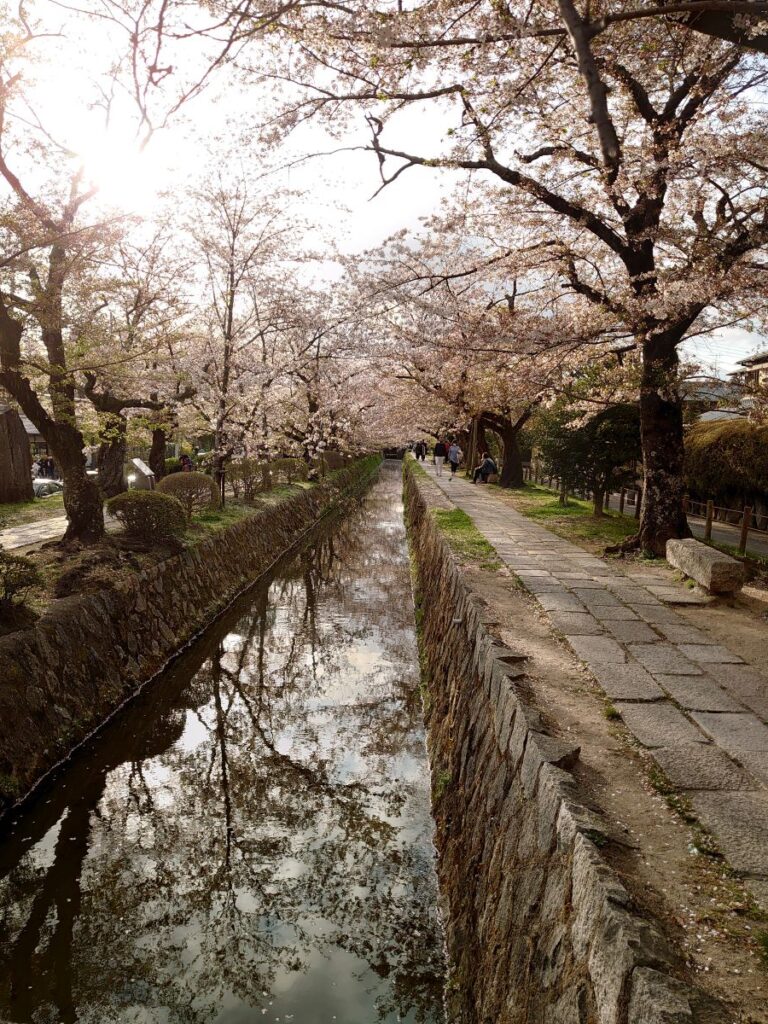
For the common people, the flowering of plants was a sort of natural calendar, used to schedule the farming work. Japanese people also had a long tradition of eating food offered to the gods to gain their favor, an act known as shinjin kyōshoku 新人供食, “eating with the gods”; this religious tradition is said to be linked to the origins of hanami as well.
Nagoshi no harae 夏越しの祓 – Summer purification rituals
A Shintō 神道 ritual involves removing the impurities (“sins”) accumulated during the first half of the year. Shintō is Japan’s native religion. Large loops of thatch are arranged in rings called chino-wa 茅の輪, inside which people pass to purify themselves from the spiritual impurities they accumulated during the first six months of the year.
During the Nagoshi no Harae period, it’s common to eat a confectionary called minazuki 水無月. Minazuki is an adzuki beans-covered rice cake; almost resembling ice, and very easy to digest, minazuki is perfect as a light snack in Japan’s summer’s heat.
A similar set of rites, called Toshikoshi no harae 年越しの祓, is performed at the end of the year, this time to atone for the “sins” of the latter half of the year.

Doyō no ushi 土用の丑 – Midsummer Day of the Ox
The eighteen-day period before the beginning of each season is known as doyō 土用.
In this eighteen-day period, what was known as the “Day of the Ox” – ushi no hi 丑の日 in Japanese – is also a day in which it is believed that eating foods starting with “u” can give relief from the oppressive heat of Japanese summer. Some of these foods are unagi 鰻 (eel), uri 瓜 (the traditional Japanese name of melons) umeboshi 梅干し- pickled Japanese plum – and wheat noodles called udon うどん.
Jūgoya 十五夜 – The Full Moon Viewing
Under the old Japanese lunar calendar, the fifteenth day of the eighth month would always be a night of a full moon.
During this night, known as jūgoya, people would held moon viewing parties. Under the current solar calendar, the jūgoya falls during September instead.
Jūgoya is another Japanese festival that is strongly connected with the Shintō religion. During this night, it’s customary to offer taro roots (satoimo 里芋 in Japanese) to the gods, and decorate homes with susuki 薄, a grass native to East Asia, often used as a reference to Autumn in Japanese poetry and art.
Aki-Higan 秋彼岸 – The Autumn Equinox Week
The week during which the Autumn Equinox falls.
As it happens during the Spring Equinox Week (Haru higan), Japanese Buddhist temples hold special services; it’s also a time of the year in which people return to their hometowns to visit their relatives and pay respects to their ancestors.
During the Aki Higan week, it’s common to eat a confection made of glutinous rice coated with red bean paste, called ohagi お萩, very similar to the botamochi eaten in spring during the Haru Higan period. You can find a more in-depth article about Aki Higan and the differences between ohagi and botamochi here on Daigo Japanese Food.
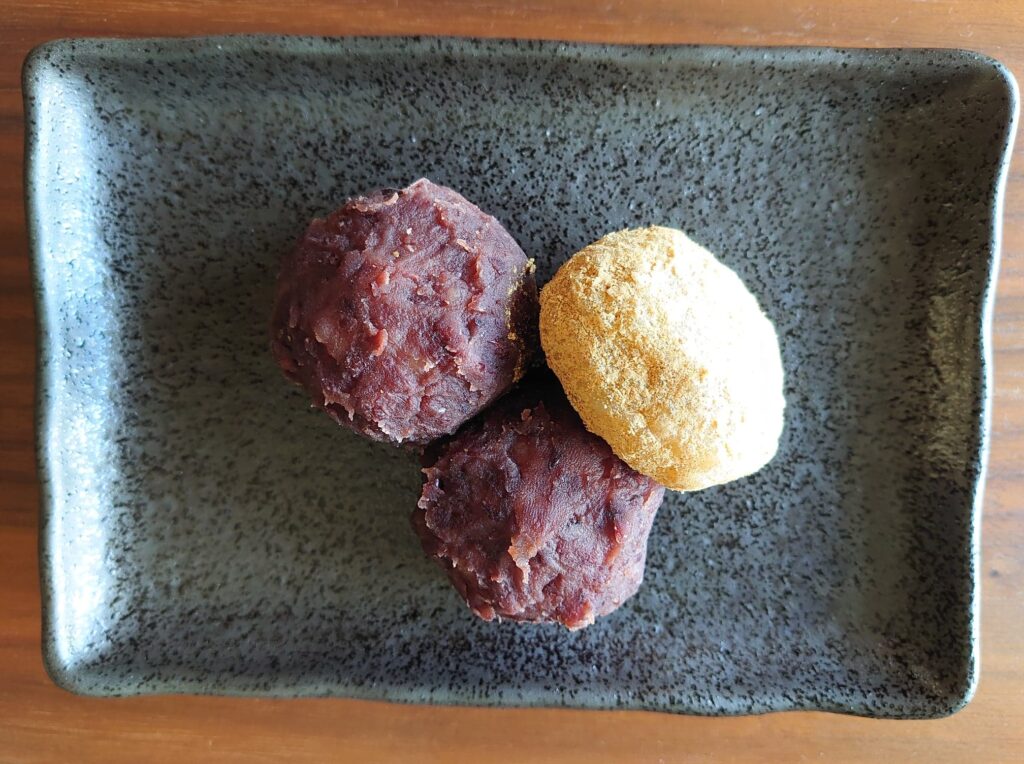
Jūsan-ya 十三夜 – The Moon Viewing
Another festival centered around the viewing of the moon, this time during the thirteenth night of the ninth month of the lunar calendar – now the month of October.
This festival is believed topredateg the introduction of the jūgoya festival from China. It was typical to offer beans and chestnuts to the gods.
According to a common belief, if one sees the jūgoya, one should then also see the jūsan-ya, in order to avoid bad luck.
Shichi-go-san 七五三 – Celebrating three, five and seven year old children
A celebration to wish children an healthy growth.
It celebrates boys aged three and five, as well as girls aged three and seven.
During the shichi-go-san, it is customary to visit shintō shrines and to make offerings and prayers to the gods to appease happiness and safety for the children. At the shrine, the children and the other celebration participants would receive a red and white candy stick called chitose-ame 千歳飴, literally “thousand years candy”, as a good luck gift.
Tōji 冬至 – The Winter Solstice
The day of the year in which the day is shortest and the night longest. As people believed that malicious spirits would be especially powerful during this long night, it was common to pray and take other steps in order to repel evil and bring good fortune
According to tradition, some of these steps had also the benefit of helping in preventing colds: things such as taking a bath in hot water infused with yuzu 柚子 citrus, as well as eating pumpkin and azuki 小豆 red beans, were considered spiritual and practical methods to safeguard one’s health during the cold winter nights.
While they might not be enough to actually prevent a cold, many people still keep the tradition of bathing in hot water with yuzu fruits and skins steeped in it.
Ōmisoka 大晦日 – New Year’s Eve
The term misoka 晦日 refers to the end of a month; the character meaning “big”, “main”, “principal”, written 大 and transliterated in “ō” (pronounced like a long “o”), is added to indicate the end of the last month of the year.
The food most commonly associated to New Year’s Eve in Japan is buckwheat noodles, called soba 蕎麦 – specifically, the soba eaten on Ōmisoka are known as Toshikoshi soba 年越し蕎麦, the “soba for the passing of the year”.
As the buckwheat plant is a symbol of resilience and perseverance in Japan, soba noodles are thought to be bringer of longevity. Together with the fact that rutin is believed to have various health benefits, Japanese people have kept following the tradition of eating toshikoshi soba from the Edo period until now.
So that was an overview of some of the most traditional Japanese festivals, and the foods that are typical in those occasions. What about the cuisine of your Country? Are there foods that are traditionally linked to specific celebrations?
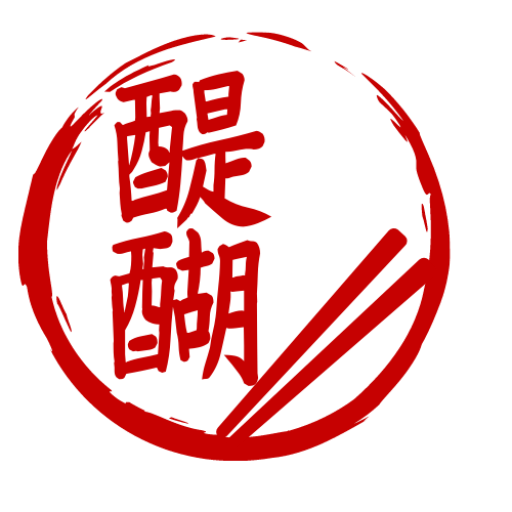
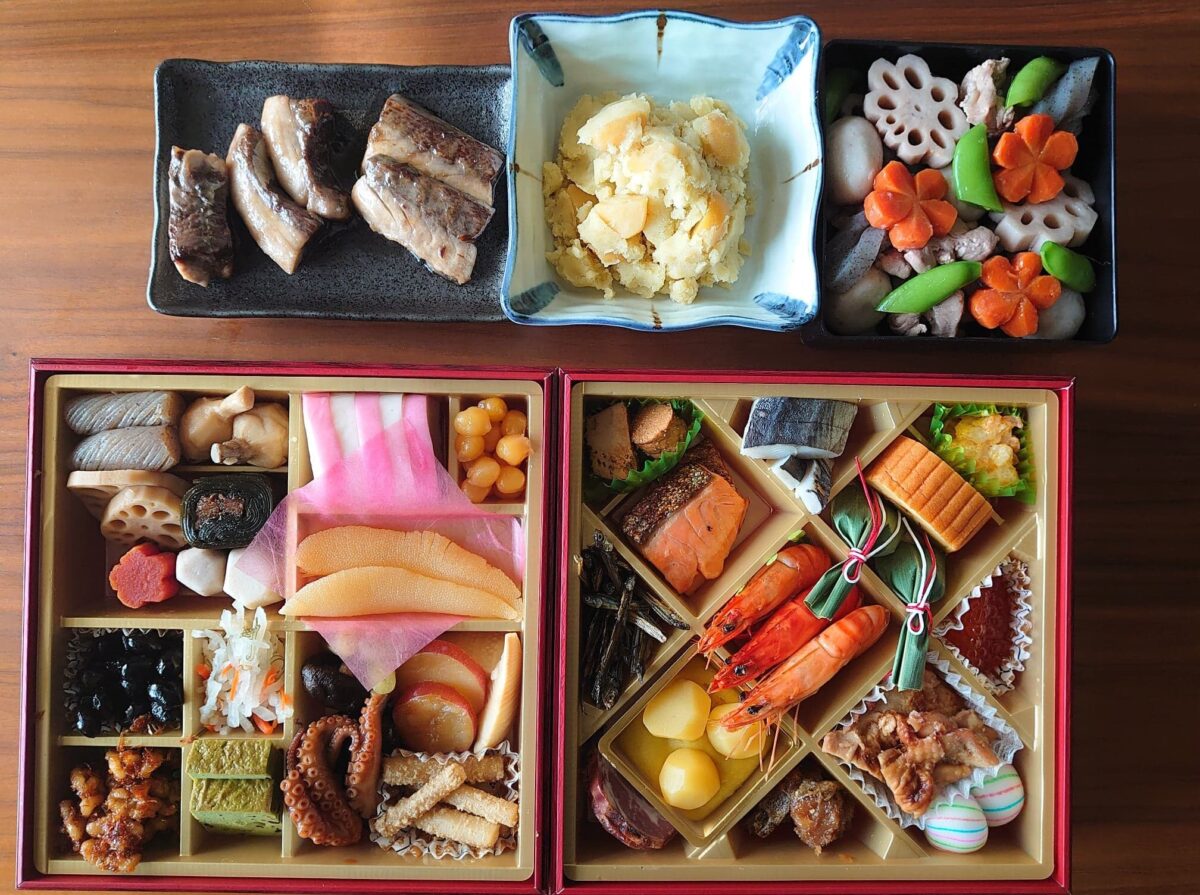
Your blog is so good author. Thank you.
Thank you for your kind comment!